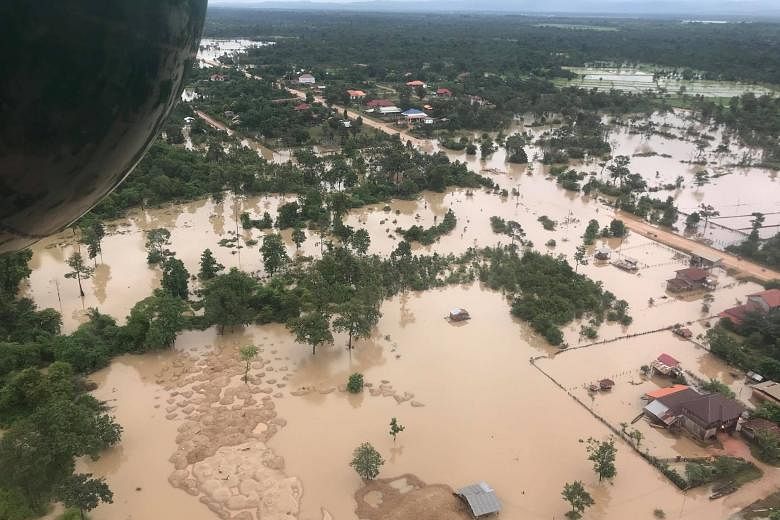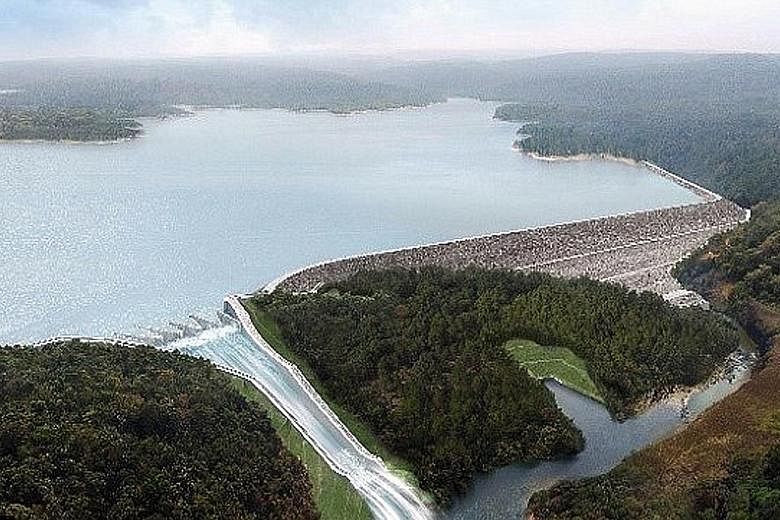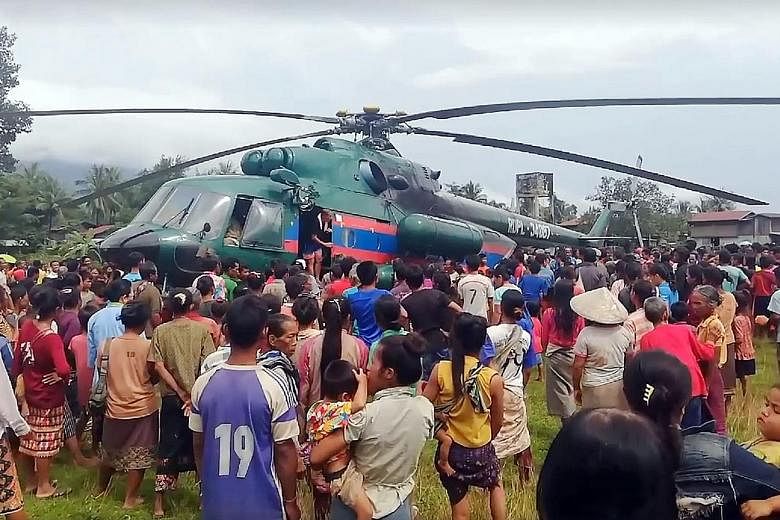ATTAPEU (Laos) • Rescue teams from China and Thailand headed yesterday into a remote part of landlocked Laos, where more than 3,000 people were stranded after a dam collapse sent a deluge of water across a swathe of villages, local media reported.
Many of those stranded were stuck on the rooftops of submerged homes, and the remoteness of the affected area in Attapeu province, the southernmost part of the country, could hamper relief operations, said experts.
Two South Korean contractors said they reported damage a day before parts of a dam that was under construction gave way on Monday and unleashed a wall of water, submerging at least seven villages.
Rescuers had recovered 26 bodies by yesterday afternoon, Thai consular official Chana Miencharoen told Agence France-Presse at the scene of the relief effort.
"Seventeen others are injured and in hospital," he said, adding that roof-level flood waters were hampering rescue efforts.
Prime Minister Thongloun Sisoulith, giving his first public update on the disaster, told a televised press conference yesterday that 3,060 people were homeless and 131 people had been reported missing.
"As the flood is continuing, another five to six villages are now being affected," he said.
A United Nations report put the death toll at five with 34 missing, 1,494 evacuated and 11,777 people in 357 villages affected.
State media said a joint team of Laotian and Chinese rescuers would reach Attapeu by afternoon, and it showed a long line of cars with boats on trailers heading into the country from Thailand.
South Korea and Singapore have also offered to help in the rescue effort, which is expected to be hampered by poor infrastructure and weather.
"The roads are very poor," said Dr Ian Baird, a Laos expert at the University of Wisconsin-Madison. "People don't usually go in that area during the rainy season."
Questions began to emerge over the collapse, with some of the displaced saying that they were warned to evacuate homes only hours before the disaster struck.
"It happened quickly, we had little time to prepare ourselves," Mr Joo Hinla, 68, from one of the worst-hit villages of Ban Hin Lath, said from a warehouse crammed with over 700 displaced people in a neighbouring province. "All of the houses in my village are under water. Four of my family are missing."
Laos, one of the world's few remaining communist states and one of Asia's poorest countries, has an ambitious dam-building scheme to become the "battery of Asia".
Its government depends almost entirely on outside developers to build dams under commercial concessions that agree to export electricity to its neighbours, including power-hungry Thailand.
Laos has completed construction of 11 dams, according to Thai non-governmental organisation Terra, with a further 11 under construction and dozens more planned.
The dam that collapsed is part of a US$1 billion (S$1.36 billion) Xe-Pian Xe-Namnoy hydropower project, which involves Laotian, Thai and South Korean firms. South Korea's SK Engineering and Construction said part of a small supply dam was washed away due to heavy rain.
Last year, the 15-megawatt Nam Ao hydropower dam collapsed in the northern Xieng Khuong province, the Vientiane Times reported, resulting in flash floods that "damaged property and risked lives".
Activists called for greater scrutiny and accountability of the hydropower projects.
"Many of the people affected by the dam collapse had already been displaced or had suffered livelihood losses and other impacts due to the construction of the dam," said Ms Maureen Harris of the advocacy group International Rivers.
"This tragedy has compounded their suffering, and highlights the safety risks, in addition to concerns about the social and environmental impacts," she said yesterday.
REUTERS, AGENCE FRANCE-PRESSE




